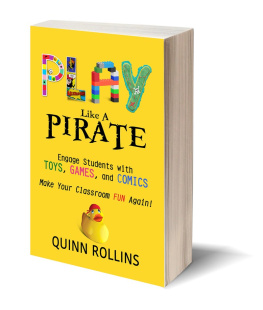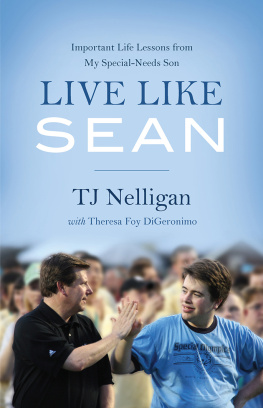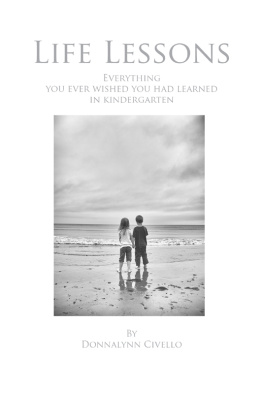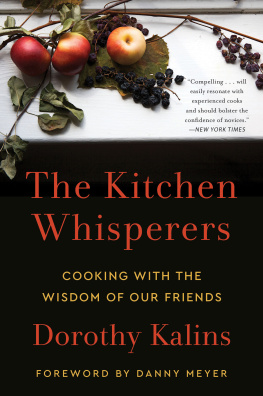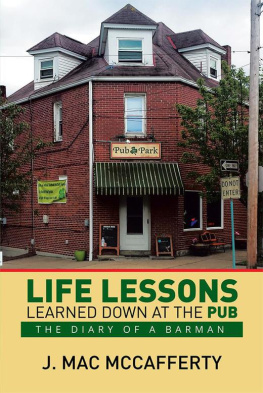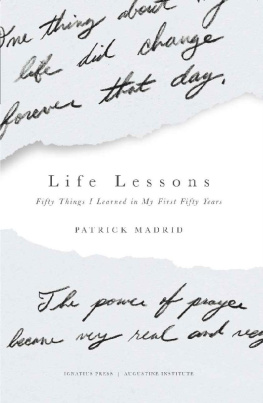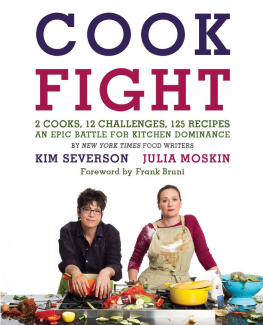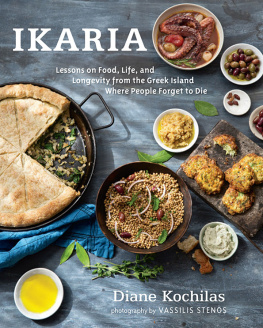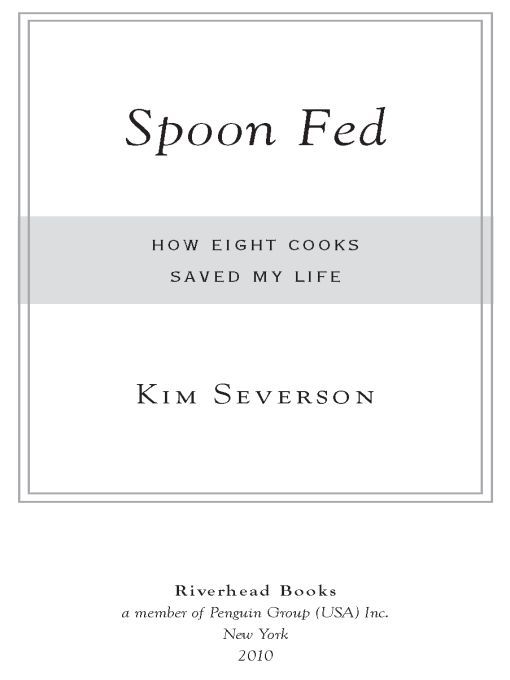Table of Contents
For Katia and Sammy
Introduction
For much of my young life, I ate my meals at a big oak kitchen table that my dad, in a mash-up of fashion and thrift, had painted black. That was before I was born, when black and white were in vogue and the Severson family was just getting started. The other table in the house, the fancy one in the dining room, was reserved for Christmas dinners and birthday parties and visits from relatives. But even before I was old enough to carry my empty cereal bowl to the sink, I knew the real action was at that black kitchen table.
Over a million meals there, our lives played out in front of one another. We five Severson kidsKeith, Kent, Kim, Keely and Kristook instruction on how to become good citizens and helpful guests. We learned to be part of a tribe. And we figured out how to behave. Making my sister, Keely, laugh so hard that milk poured from her nose wasnt cool. Bringing home a good report card was.
Depending on the day, I arrived at the dinner table happy, sad, angry or bored. As a teenager, I sometimes showed up stoned. I once sat at that table for hours, refusing to eat green beans despite my fathers declaration that my freedom could be earned with just three bites. But mostly, our meals did not include much drama. I lived a middle-class childhood of pork chops, baked potatoes and milk, punctuated with bursts of ambitious cooking for dinner parties and holidays.
My rock-solid dad, James Howard Severson, fought the good fight in the middle management battlefield of a national tire company. He comes from Norwegian stock. Although he likes a good martini and prefers the woods to all other places, he was never a man prone to playing hooky or calling in sick, even if he was. Just dont be a burden on society, hed say when we came to him for advice on what to do with our lives. Every morning he would wipe a bit of fried egg from his fingers, scoot back a chair and head out the door with his briefcase. The goal was to leave the office early enough to make it to one of the ball games or music recitals or swim meets that rolled through our lives in an endless loop.
By the time he left in the morning, my mom, Anne Marie Severson, had already been at work for hours. Her people were Italian, and the kitchen was her office. Brown paper lunch sacks had to be filled with apples and sandwiches. A Bundt cake had to be baked for a volunteer group luncheon. Something had to become dinner. She had been a farm girl whose childhood home in the far north Wisconsin woods saw its first refrigerator when she was in elementary school. As a result, she embraced every new twist of kitchen technology. We had a crepe pan and a food processor before anyone else on the block, and she prized her rectangular harvest gold electric frying pan. She ran the kind of efficient and reliable home kitchen thats hard to find these days.
On the surface, I looked like a lot of other resilient, freckled kids. I was athletic and social. But I was the middle child, pulled by the moods of the siblings above and below me. And I was eager to make myself an integral part of household business. (Others might say, less politely, that I was nosy.) I was desperate to stand out in a family that prized the team, but I was more sensitive than I let on. I felt overwhelmed by the world, and my solution was a constant quest to fit into it somehow. This was exhausting. At the end of the day, arriving home to that kitchen brought instant relief. I relied on my moms predictable roster of lasagna and fried chicken and even the dry venison roasts from deer my dad had shot. And I especially loved it when she would get fired up on a mix of womens magazines and boredom and we would eat with a certain middle-class culinary panache. Pasta alla carbonara, Oriental pepper steak and French crepes would appear like exotic relatives.
Despite the warmth and consistency that came from that kitchen, pity the child who pushed things too far. Who can forget the afternoon my oldest brother, Keith, smarted off one too many times? My mother hit him in the head with a frozen bass. That night, the bass was on the table. To this day, he still doesnt care much for fish. Still, no matter what happened during the day, no matter how many times you took a frozen fish to the head, getting back to that table by dinner was the one rule you absolutely wanted to obeyat least, it was the one I tried to obey even when I became a teenager and discovered how many rules there were to break. The table was where I was safe. It was home. And when my mother started to teach her earnest little elementary school daughter to put dinner on that table, she gave me everything I needed to know to make a safe home when I grew up.
The problem is, somewhere between those early lessons and the ones I am trying to teach my own young daughter, I stumbled hard and lost my way. It would take a series of women who knew how to cook to reteach me the life lessons I forgot and to teach me the ones I never learned in the first place. Most of those lessonssimple truths about the way life workshave been delivered in complex wrappers that have taken me years to open. Others were hidden in the smallest of packages delivered by the most unexpected people.
Let me give you a little example. Early one cold California morning, long after I had started my career as a newspaper reporter, I stumbled out of my car chilled and stiff. I had driven for an hour northwest from Berkeley to Inverness, a tiny town near the Point Reyes National Seashore. My editor at the San Francisco Chronicle wanted me to write about Margaret Grade, a psychiatrist who runs a quirky little inn that was popular with chefs and actors. They liked the peace and quiet of her down-covered beds and her quirky affection for taxidermy and old books. They had also fallen for the food she made from local eggs, fish and vegetables that people with names like Eat Dog and Lumpy delivered to her doorstep.
I walked around to the back of the inn until I found a heavy wooden door. I pushed hard against it and took a few tentative steps into a dark kitchen. Before I could even unbutton my coat and say hello, Margaret appeared out of nowhere and slipped a spoonful of warm polenta in my mouth. She had been up for a couple of hours already, kayaking in from her house across the water. She had put some scones in the oven and then got busy melting Taleggio into soft cornmeal. To finish her porridge, she stirred in pieces of meaty chanterelle mushrooms that had pushed themselves up in nearby woods only a couple of days earlier.
The warmth of the cornmeal hit me first, wiping away the chill. Then came the tang of the cheese, working like a bright, creamy tonic on my sleepy senses. The mushrooms offered a solid sense of place and closed the deal. In the moment it took to pass the spoon from her pot to my mouth, we bonded. Two strangers became friends. We were women who were willing to stop whatever we were doing and stand in awe of something good to eat. I left at the end of that day with a nice newspaper story, but I also had a little life lesson in my back pocket: Giving someone a taste of something delicious at exactly the right moment is a fail-safe way to start a good relationship.
I have made it this far in life only because people took the time to teach me those kinds of lessons. And the biggest lessons were delivered in the kitchen, given to me by women who made their families dinner every night, who saved favorite recipes to pass on and needed only a paring knife and a sturdy spoon.


